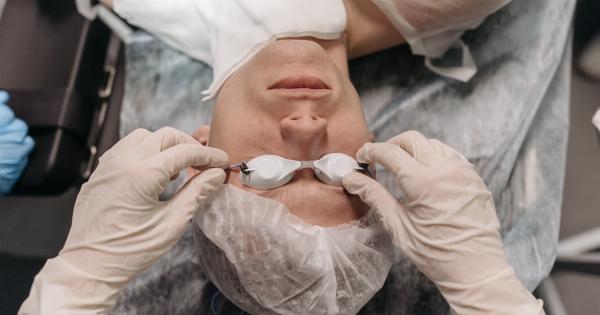Undergoing hip arthroplasty, also known as hip replacement surgery, is a major medical procedure that can significantly improve the quality of life for individuals suffering from hip pain and disability.
While the surgery itself is crucial, proper recovery and rehabilitation following hip arthroplasty are equally important for achieving optimal outcomes. In this article, we will discuss the essential information you need to know about recovering from hip arthroplasty, including tips for managing pain, exercises for rehabilitation, and precautions to take during the healing period.
The Initial Recovery Period
After hip arthroplasty surgery, you will spend a few days in the hospital to ensure proper monitoring and initial rehabilitation. During this time, it is common to experience pain and discomfort, which can be managed with prescribed medication.
It is crucial to strictly follow your healthcare provider’s instructions regarding pain medication dosages and schedules.
During your hospital stay, a physical therapist will work with you to help you regain mobility and strengthen the muscles surrounding your new hip joint.
They will assist you in performing exercises and teach you how to use assistive devices such as crutches or walkers. It is essential to follow their guidance and gradually increase your physical activity to avoid complications and ensure a smooth recovery.
Managing Post-Surgical Pain
Pain management is a crucial aspect of the recovery process after hip arthroplasty. While some discomfort is expected during the initial weeks following surgery, it should gradually decrease over time.
Here are a few tips to help manage post-surgical pain:.
1. Take Prescribed Pain Medication
Make sure you take your prescribed pain medications as directed by your healthcare provider. It is essential to follow the dosing schedule strictly to maintain consistent pain relief.
2. Use Ice Packs
Applying ice packs to the surgical area can help reduce swelling and alleviate pain. Place a thin cloth or towel between the ice pack and your skin to avoid direct contact and potential damage to the skin.
3. Practice Elevation
Elevating your leg while sitting or lying down can help reduce swelling and minimize pain. Prop your leg up on a pillow or cushion to keep it elevated when resting.
4. Engage in Gentle Exercises
Performing gentle exercises as recommended by your physical therapist or healthcare provider can help improve blood circulation, reduce stiffness, and relieve pain.
Make sure to avoid any strenuous activities or exercises that may strain your hip joint.
5. Practice Deep Breathing and Relaxation Techniques
Deep breathing exercises and relaxation techniques can help alleviate pain and promote overall well-being during the recovery period.
Consult with your healthcare provider or a physical therapist to learn simple relaxation techniques that can complement your recovery process.
Rehabilitation and Physical Therapy
Once you have returned home from the hospital, your recovery journey continues with rehabilitation and physical therapy. Working with a physical therapist is essential to regain strength, flexibility, and function in your hip joint.
The duration and intensity of rehabilitation may vary depending on your individual progress and condition.
Your physical therapist will design a personalized exercise program tailored to your specific needs and abilities. The exercises will focus on strengthening the hip muscles, improving range of motion, and enhancing overall balance and stability.
It is crucial to consistently follow the exercise program to achieve a speedy and successful recovery.
In addition to structured therapy sessions, it is vital to stay active throughout the day. Regular low-impact activities such as walking, swimming, and stationary cycling can help maintain joint mobility and promote healing.
Always consult with your healthcare provider or physical therapist before starting any new exercises or activities.
Precautions During Recovery
While undergoing hip arthroplasty recovery, certain precautions should be taken to prevent complications and ensure the longevity of your new hip joint. Here are some essential precautions to keep in mind:.
1. Follow Weight-Bearing Restrictions
Your healthcare provider will provide specific instructions regarding weight-bearing restrictions. It is crucial to adhere to these restrictions to prevent dislocation or damage to the new hip joint.
Use assistive devices as recommended and gradually increase weight-bearing activities as advised by your healthcare provider.
2. Avoid Falls
Take precautions to minimize the risk of falls during your recovery. Remove any tripping hazards in your home, such as loose rugs or cluttered walkways.
Use assistive devices for mobility assistance and be cautious when navigating uneven surfaces or stairs.
3. Maintain a Healthy Diet
Eating a nutritious and well-balanced diet is essential for proper healing and recovery. Make sure to consume adequate amounts of vitamins, minerals, and protein to support tissue repair and overall health.
4. Attend Follow-Up Appointments
Regularly attend follow-up appointments with your healthcare provider to ensure your recovery is progressing as expected.
They will monitor your healing, make any necessary adjustments to your treatment plan, and address any concerns or questions you may have.
5. Practice Proper Wound Care
Following proper wound care instructions is crucial to prevent infection and promote healing. Keep the surgical area clean and dry as advised by your healthcare provider.
Conclusion
Recovering from hip arthroplasty can be a challenging process, but understanding what to expect and following the proper guidelines can help ensure a successful recovery.
Managing post-surgical pain, engaging in rehabilitation and physical therapy, and taking necessary precautions during the recovery period are essential for a positive outcome. Remember to consult with your healthcare provider or physical therapist for personalized advice and guidance throughout your recovery journey.
With patience, dedication, and proper care, you will soon regain mobility and enjoy a significantly improved quality of life.






























